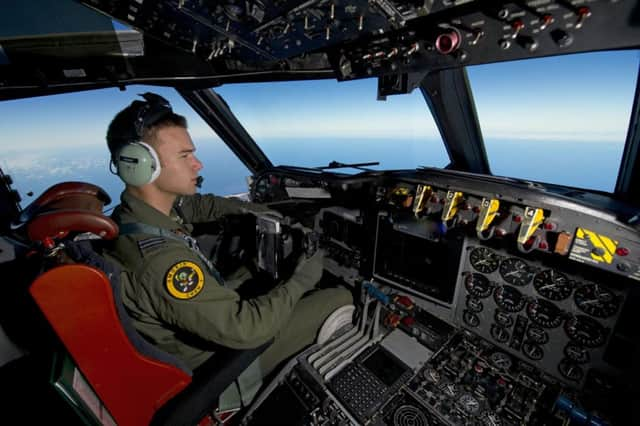Could objects come from Malaysia Airlines planes?


The international search had be called off yesterday due to bad weather.
Four planes will continue to sweep an area 1,550 miles south-west of the city of Perth, about halfway between Australia and the Antarctic.
Advertisement
Hide AdAdvertisement
Hide AdSatellite images showed two objects suspected of being debris from flight MH370, the Kuala Lumpur-Beijing plane which vanished with 239 people on board on 8 March.
One of the objects was 24 metres long and the other five metres said John Young, of the Australian Maritime Safety Authority’s emergency response division. “This is a lead, it’s probably the best lead we have right now. The search will continue on Friday,” he said.
But he warned the objects could be flotsam, along a shipping route where containers can fall off cargo vessels.
Relatives of passengers have criticised Malaysian authorities for not releasing timely information. Many hope their loved ones will be found alive, though the latest lead suggests the plane crashed into the sea.
“If it turns out that it is truly MH370 then we will accept that fate,” said Selamat Bin Omar, the father of a Malaysian passenger on the jet, which carried mostly Chinese and Malaysians.
Malaysian defence minister Hishammuddin Hussein said yesterday that “for all the families around the world, the one piece of information that they want most is the information we just don’t have – the location of MH370”.
Malaysian officials held a private meeting with the relatives in a hotel near Kuala Lumpur last night. Speaking after the event, Hamid Amran, who has a child on the flight, said: “I believe that my child and all the other passengers are still alive. I will not give up hope.”
A man who would only give his surname, Lau, said he was there to support a Chinese couple who had lost their only son. “Some families are slowing accepting the worst,” he said.
Advertisement
Hide AdAdvertisement
Hide AdMr Young said the depth of the ocean in the latest area, south from where the search had been focused since Monday, is several thousand metres.
He said it may be difficult to spot the objects as they “are relatively indistinct on the imagery … but experts indicate they are credible sightings”.
The Australian Maritime Safety Authority released two images of the whitish objects taken on 16 March, discovered after a painstaking analysis of surveillance images. An Australian C-130 Hercules plane dropped marker buoys in the area to aid the search. Some analysts, though, said the debris is probably not from MH370. “The chances of it being debris from the plane are probably small, and the chances of it being debris from other shipping are probably large,” said Jason Middleton, an aviation expert at the University of New South Wales in Sydney.
The hunt for the Boeing 777 has been punctuated by several false leads since it disappeared above the Gulf of Thailand. Oil slicks that were spotted did not contain jet fuel. A yellow object turned out to be a piece of flotsam. Chinese satellite images showed possible plane debris, but nothing was found.
But this is the first time possible objects have been spotted since the search area was massively expanded.
Hishammuddin made clear search efforts are mostly concentrated south of the equator over the vast Indian Ocean.
Out of a total of 29 aircraft, 18 ships and six ship-borne helicopters deployed in the operation, only four aircraft are now scouring the north.